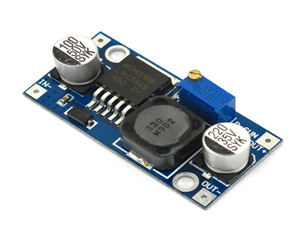DC DC CONVERTER
A DC-to-DC converter is an electronic circuit or electromechanical device that converts a source of direct current (DC) from one voltage level to another. It is a type of electric power converter. Power levels range from very low (small batteries) to very high (high-voltage power transmission).
Before the development of power semiconductors and allied technologies, one way to convert the voltage of a DC supply to a higher voltage, for low-power applications, was to convert it to AC by using a vibrator, followed by a step-up transformer and rectifier. For higher power an electric motor was used to drive a generator of the desired voltage (sometimes combined into a single "dynamotor" unit, a motor and generator combined into one unit, with one winding driving the motor and the other generating the output voltage). These were relatively inefficient and expensive procedures used only when there was no alternative, as to power a car radio (which then used thermionic valves/tubes requiring much higher voltages than available from a 6 or 12 V car battery). The introduction of power semiconductors and integrated circuits made it economically viable to use techniques as described below, for example to convert the DC power supply to high-frequency AC, use a transformer—small, light, and cheap due to the high frequency—to change the voltage, and rectify back to DC. Although by 1976 transistor car radio receivers did not require high voltages, some amateur radio operators continued to use vibrator supplies and dynamotors for mobile transceivers requiring high voltages, although transistorised power supplies were available.

